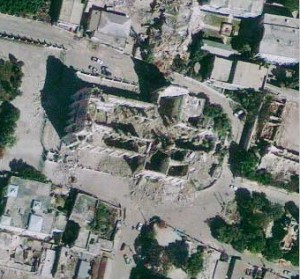Mapping agency ends work with GeoEye
The divorce is now final between the National Geospatial-Intelligence Agency and GeoEye, the Herndon, Va., satellite imaging company that once envisioned a lucrative long-term partnership with the mapping agency.
On Dec. 5, NGA notified GeoEye that “effective immediately” it will end its cost-sharing agreement with the company and keep $70 million in payments toward GeoEye's next satellite, GeoEye-2, whose 2013 launch is now a question mark.
“The parties were unable to agree on mutually acceptable terms” during talks over how much control NGA should have over the new satellite, GeoEye reported in a Dec. 7 filing to the U.S. Securities and Exchange Commission.
The backdrop to the talks was NGA’s June decision to stop buying imagery services from GeoEye after Nov. 30, while continuing to do business with GeoEye’s rival, DigitalGlobe of Longmont, Colo. NGA faced a dilemma after the Obama administration announced it would dramatically scale back Enhanced View, a 10-year program to buy imagery services and, in GeoEye’s case, invest in satellite construction.
With the pie shrinking fast, GeoEye quickly agreed to be purchased by DigitalGlobe in a proposal that is now under review by the monopoly-wary Justice Department.
For GeoEye, the loss of the $70 million “is yet another reason this deal has to happen,” said consultant Andrew Koch of Scribe Strategies and Advisors. “At this point, GeoEye is pretty much flying without a safety net,” he said.
GeoEye continues providing imagery commercially, including for mapping services such as Google’s.
In the filing, GeoEye said it sought “changes” to NGA’s rights to GeoEye-2, given the mapping agency’s decision to contribute nothing beyond the $70 million. GeoEye-2 is expected to cost about $850 million including launch vehicle, insurance and ground equipment.
GeoEye did not elaborate on the changes it sought. In the past, control of a satellite’s joystick – meaning where to point it and under what conditions – has been a sensitive issue. In 2008, the intelligence community and Pentagon launched what turned out to be a short-lived effort to build a government-owned constellation of mapping satellites, called the Broad Area Space-based Imagery Collector, or BASIC.



